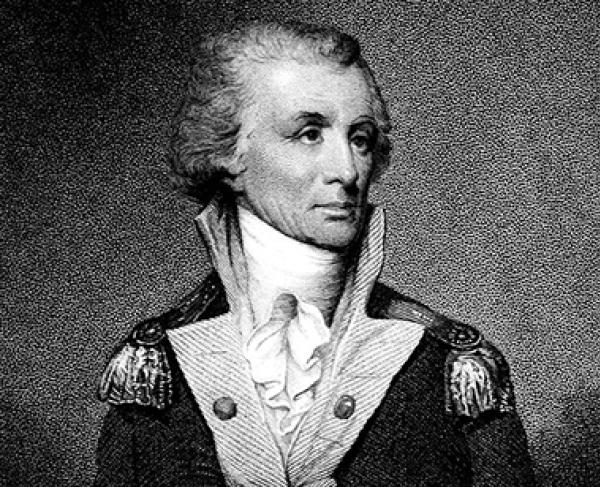I wanted to write a light blog, but one still steeped in history. The mascot for the University of South Carolina is a gamecock (fighting rooster) named “Cocky.” When asked about the mascot, I myself have used the standard line, “An ass-kicking chicken.” Since 1903, the University has used the name “Gamecock” for all its sports teams. However, the name did not come from the chicken, the gamecock, but from Brigadier General Thomas Sumter.

Who was Thomas Sumter? He was an American Revolutionary war hero—perhaps the third greatest Revolutionary War leader, behind only George Washington and Nathaniel Greene. A British General fighting in the southern colonies is said to have told his troops that Sumter fought like a gamecock, thus he was ordained with the nickname “The Carolina Gamecock.”

Thomas Sumter was born in Hanover County, Virginia, in 1734. As legend goes, Sumter was “small” in stature but “big” in fight. He enlisted in the Virginia militia, rising to the rank of officer during the French-Indian War. After that war, Sumter was selected to go out among the Cherokee people to mend the relationship with the colonists. Later, Sumter was selected to travel to London, along with several Cherokee, including their leader Ostenaco, to meet British King George III.
Prior to the American Revolution, Sumter fell into financial trouble from his travel expenses to improve relations with the Cherokee. When Virginia would not forgive his debt, he was imprisoned. A friend came to Staunton, where Sumter was incarcerated, and gave him ten guineas and a tomahawk to buy his way out of debtors prison in 1766.
Sumter moved from Virginia to Stateburg, South Carolina, just to the west of the town which would later be given his namesake, Sumter. In 1767, he married Mary Jameson. They became planters, but soon Sumter went back to his roots and raised a local militia. By February 1776, the divide between the Colonies and the British Empire had grown, and Sumter was elected lieutenant colonel of the Second Regiment of the South Carolina Line. Soon, he became a colonel. He subsequently was appointed brigadier general, a post he held until the end of the war. Some of his early Revolutionary War battle successes included preventing the invasion of Georgia.
Sumter was part of the defense of Charleston, South Carolina, at the Battle of Sullivan Island. However, when the British conquered Charleston in 1780, Sumter escaped to North Carolina.
After British Colonel Banastre Tarleton’s raiders burned his house, Sumter organized another local militia to fight the British. Sumter had victories over the British at Catawaba and Hanging Rock (in Lancaster County). Sumter confronted and defeated Tarleton at the Battle of Blackstock’s Farm. Tarleton commented to his superiors that Sumter “fought like a gamecock.” Perhaps his greatest military achievement is fighting Cornwallis to the point of the British abandoning the Carolinas and moving their army into Virginia. Cornwallis described him as his “greatest plague.”
After the Revolutionary War, Sumter went into politics, serving in both the House of Representatives and the Senate.
If some of this story sounds familiar, part of Sumter’s history (along with that of several other South Carolinians) was used by Mel Gibson to define his persona in the movie, “The Patriot.”
When the fort at Charleston, South Carolina, was constructed in 1829, it was named after Sumter. The city of Sumter is sometimes referred to as “The Gamecock City,” but it is the University of South Carolina that has made his namesake famous.
Sumter passed away at the age of 97 on June 1, 1832, and was buried near his home.
